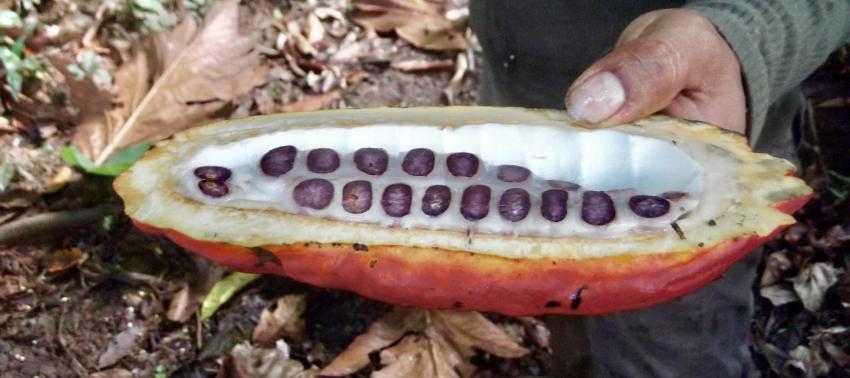Chocolate
Cacao grows here

My personal favorite Peruvian export comes from the cacao tree. The journal Nature backs up what Peruvians claim, that the Theobroma cacao tree is “native to humid tropical regions of the northern part of South America,” i.e. Peru.
While there is evidence that the Maya of Mexico were the first to cultivate cacao and make something resembling today’s chocolate, Peru can definitely claim the tree itself.
The cacao pod (below) is harvested in farms throughout lowland eastern Peru. The western coast on the Pacific Ocean is a desert, so any chocolate always comes from the eastern slope in or near the Peruvian Amazon.

There is a Chocomuseo in Lima and another in Cusco, where you can learn about chocolate. Arequipa has something similar at Chaqchao, where you can take chocolate classes and learn about the bean to bar process.